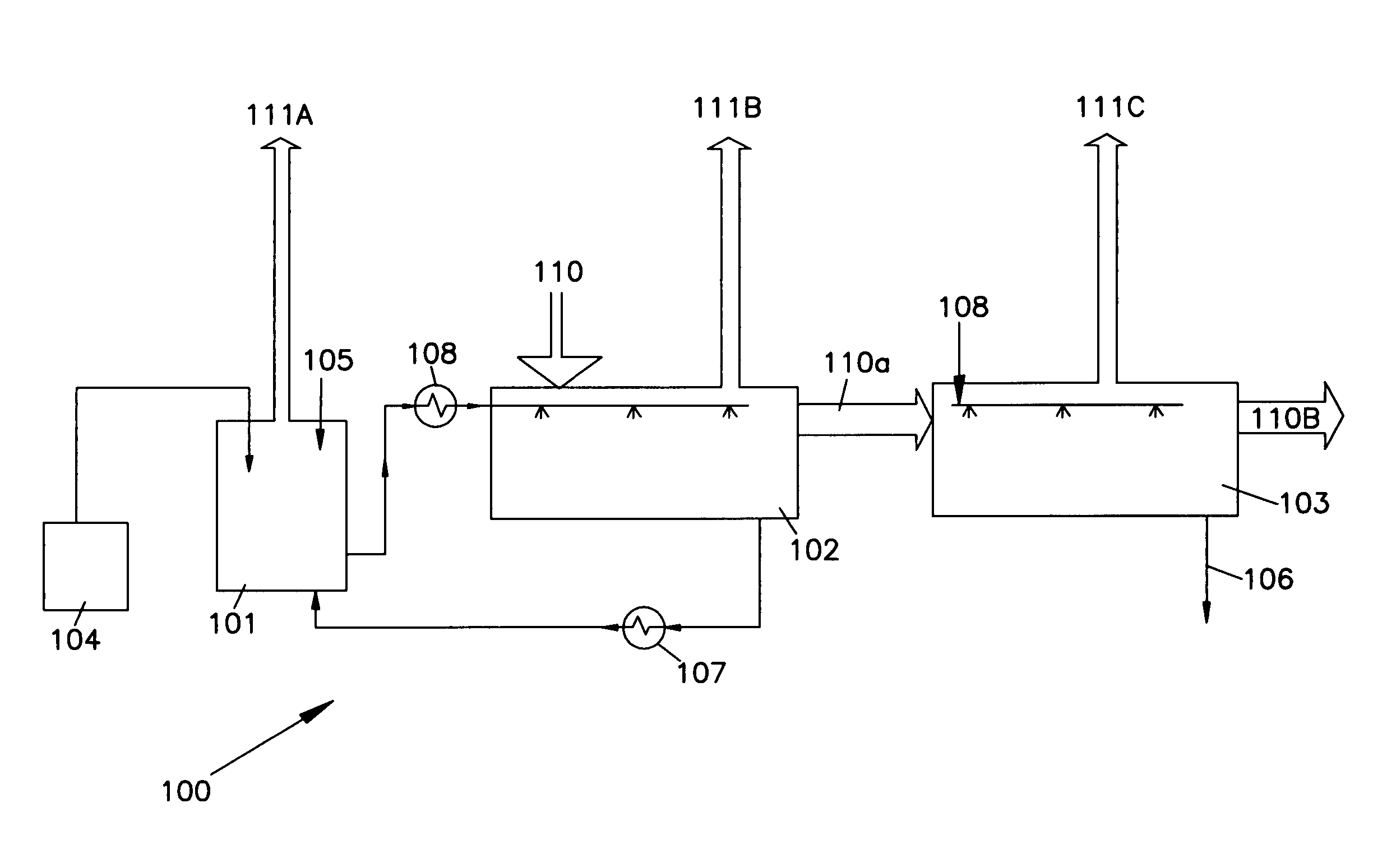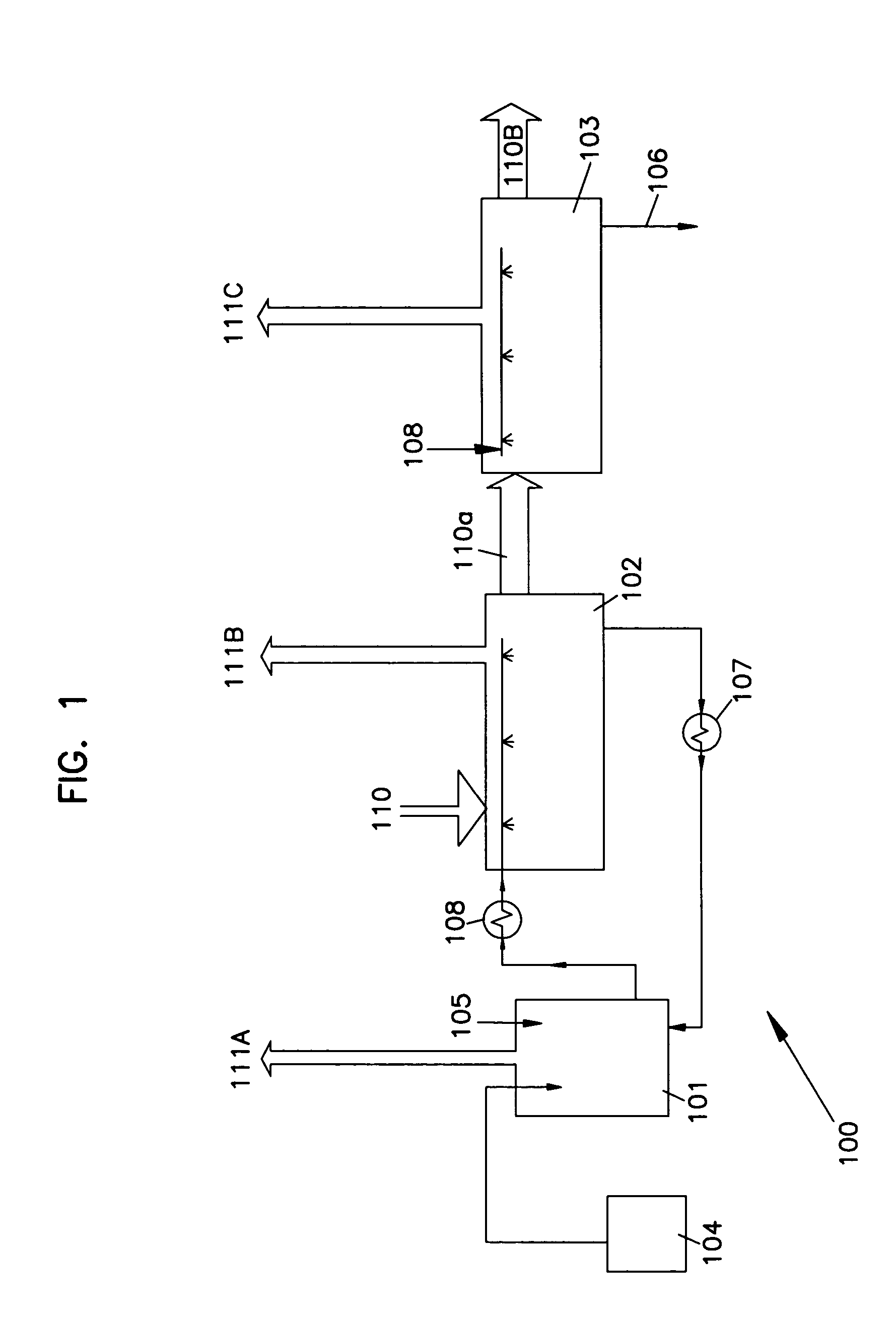Two solvent antimicrobial compositions and methods employing them
- Summary
- Abstract
- Description
- Claims
- Application Information
AI Technical Summary
Benefits of technology
Problems solved by technology
Method used
Image
Examples
example 1
[0192] Several compositions were evaluated by comparing them against a commercially available aseptic bottle washing biocide based on mixed peracids (MATRIXX™; Ecolab). Compositions containing only 1000 ppm or 2000 ppm of a single peracid or mixed peracids were used as controls. The remaining compositions were prepared by adding 10% of various solvents to an aqueous solution containing 1000 ppm or 2000 ppm of the mixed peracids. Non-solubilizing amounts of anionic surfactants were added to some of the compositions to affect minimal coupling and to yield, in some cases, pseudo-stable behavior and at least a partial phase-splitting condition. Addition of such non-stabilizing amounts tended to provide partial coupling and improved antimicrobial solution stability but not necessarily improved microbial control.
[0193] The compositions and controls were evaluated for antimicrobial activity using the procedure set out in set out in Germicidal and Detergent Sanitizing Action of Disinfectan...
example 2
[0196] Several two solvent antimicrobial compositions including diluting solvent and a solvent only partially or sparingly soluble in that solvent were evaluated for biocidal control, using the method of Example 1, and compared to several commercial products and to formulations from several U.S. patents. The compositions of commercial products formed clear (single-phase) formulations when prepared according to instructions. The two solvent antimicrobial compositions including diluting solvent and a solvent only partially or sparingly soluble in that solvent formed pseudo-stable cloudy compositions that underwent phase splitting following application. All tested compositions were evaluated against the spore-forming, enterotoxin producing pathogens Bacillus cereus and Bacillus subtilis and the mold C. funicola using a 10 second contact time at 60° C.
[0197] Set out below in Table II are the run number, benzyl alcohol amount, amounts of additional ingredients, appearance of the mixture...
example 3
[0200] Using the method of Example 1, 5% portions of various sparingly soluble solvents were added to plain water or to commercial peracid bottle washing formulas (KX-6091, 15C, or VORTEXX™; Ecolab) and tested against the mold C. funicola using a 10 second contact time at 60° C. A non-emulsifying amount of the anionic surfactant sodium octene sulfonate was added to some of the compositions to slow down, but not prevent, phase-splitting.
[0201] Set out below in Table III are the run number, solvent, peracid, peracid concentration, surfactant concentration, appearance of the mixtures after they had been allowed to stand for 1 minute, and observed log order reduction for C. funicola for each composition.
TABLE IIIRunPeracidSurfactantC. funicolaNo.SolventPeracidConcentrationConcentrationAppearanceLog Reduction3-1NoneKX-609112000 ppm0ppmclear (1-phase)0.23-2None15C12000 ppm2500ppmclear (1-phase)0.23-3NoneVORTEXX12000 ppm5960ppmclear (1-phase)0.13-4Glycol solvents2KX-609112000 ppm0ppmclo...
PUM
| Property | Measurement | Unit |
|---|---|---|
| Temperature | aaaaa | aaaaa |
| Temperature | aaaaa | aaaaa |
| Temperature | aaaaa | aaaaa |
Abstract
Description
Claims
Application Information
 Login to View More
Login to View More - R&D
- Intellectual Property
- Life Sciences
- Materials
- Tech Scout
- Unparalleled Data Quality
- Higher Quality Content
- 60% Fewer Hallucinations
Browse by: Latest US Patents, China's latest patents, Technical Efficacy Thesaurus, Application Domain, Technology Topic, Popular Technical Reports.
© 2025 PatSnap. All rights reserved.Legal|Privacy policy|Modern Slavery Act Transparency Statement|Sitemap|About US| Contact US: help@patsnap.com



